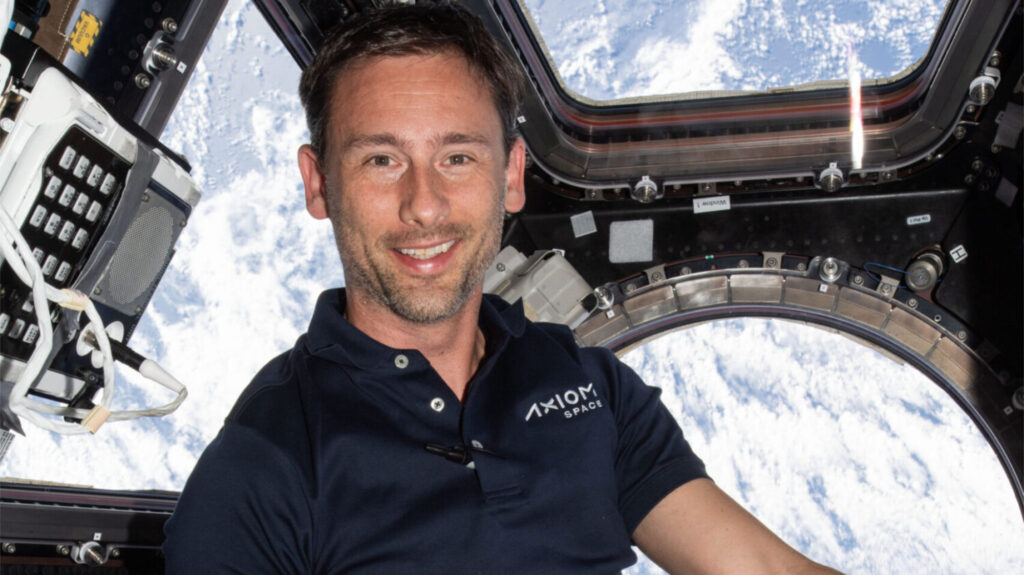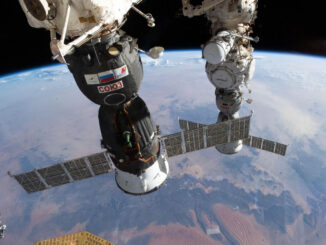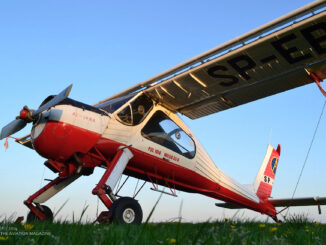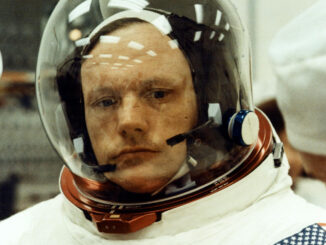
Sławosz Uznański-Wiśniewski flew to the International Space Station (ISS) within the Polish science mission Ignis, as European Space Agency (ESA) project astronaut. He worked as mission specialist participating in the private Ax-4 mission by Axiom Space, together with commander Peggy Whitson from the USA, pilot Shubhanshu Shukla from India and another mission specialist Tibor Kapu from Hungary, who flew into space within HUNOR (Hungarian to Orbit) programme.
The Ax-4 was the second commercial space mission, involving an ESA project astronaut. Sławosz Uznański-Wiśniewski joined the flight under the agreement between ESA, Polish Space Agency (Polska Agencja Kosmiczna – POLSA) and the Polish Ministry of Development and Technology (Ministerstwo Rozwoju i Technologii – MRiT), with the latter covering the cost of the Polish share in the mission.
The Ax-4 crew was launched on 25th June 2025, at 2:31 a.m. (8:31 a.m. CEST) aboard the SpaceX Crew Dragon spacecraft named ‘Grace’, which lifted-off into space atop a Falcon 9 rocket from the iconic Launch Complex 39A at the NASA Kennedy Space Center in Florida.
On 26th June at 6:31 a.m. ET (12:31 p.m. CEST), almost twenty-eight hours after the launch, the ‘Grace’ docked to the Harmony module of the ISS, while the station was passing over the North Atlantic.
‘This mission shows that space exploration is no longer limited to a few nations — it’s a shared effort that reflects the best of what we can achieve together. We launched a message to the world that science, exploration, and unity transcend borders. For me, returning to space is always a privilege. But leading this crew — representing the dreams and determination of India, Poland, and Hungary as they return to human spaceflight — that’s something truly special. We’re carrying the hopes of millions who dare to look up and imagine what’s possible. This is what the future of space looks like — bold, inclusive, and driven by purpose.’ – said commander Peggy Whitson.

The ESA Director of Human and Robotic Exploration, Daniel Neuenschwander, also commented on the Ax-4 mission after it launched.
‘The launch and successful docking of the Axiom 4 mission highlights the commitment of ESA to support its Member States and their ambitions. We worked in close collaboration with Poland to support the implementation of innovative scientific payloads which will support the growth of its national technological expertise while highlighting the country’s capabilities in space exploration. I am proud of the incredible work performed by our teams that underlines, once again, the ability of ESA to deliver.’ – he said.
Shortly after the docking procedure, the Ax-4 mission crew boarded the ISS, where it was greeted by the current crew from Expedition 73. During the official, live-streamed welcome ceremony, astronauts from India, Poland and Hungary – for whom this was their first space flight – received their official astronaut wings, each adorned with a unique number. The badges were presented to the space rookies by Peggy Whitson, who is a veteran on that matter, having already five space flights on her account. Thus, Shubhanshu Shukla became the 634th, Sławosz Uznański-Wiśniewski the 635th and Tibor Kapu the 636th astronaut, respectively.
After arriving and settling in on the ISS, Sławosz Uznański-Wiśniewski and his fellow Ax-4 mission astronauts almost immediately set to work. With more than sixty experiments to be conducted in the fields of biomedicine, advanced materials, neuroscience, agriculture and space technology, Axiom 4 was the most research-intensive private astronaut mission to date.
The Polish astronaut took part in performing twenty-one of the aforementioned experiments, including thirteen Polish-led ones, five done for ESA and three for Hungary. Working on them, took Sławosz Uznański-Wiśniewski a total of 105 hours.

‘The Ignis mission confirms that Poland is already not only a participant in world space missions, but also a contributor to them. The extensive technological and scientific programme, i.e. thirteen experiments to be carried out on the ISS, as well as the extensive educational programme, indicate the scale of this undertaking. The results of the experiments may find application in the space sector, but also contribute to the development of other industries and successfully serve to strengthen national security. It is no coincidence that the space sector and related advanced technologies are considered among the strategic ones in highly developed countries. Poland also – through the mission – proves that this is an important and prospective area for the country.’ – emphasised ScD Marta Ewa Wachowicz, the President of POLSA, at the beginning of the mission.
What’s more, Sławosz Uznański-Wiśniewski not only fulfilled all the planned mission objectives but exceeded them by performing an additional 27% of the activities, among which were eight live communications with Earth. This made the Polish astronaut a true ambassador for European science and exploration.
The Ignis mission, being the first human flight to the ISS sponsored by the Polish government, is a historic milestone and a significant move forward in the growing role of Poland in space exploration. The Polish experiments to be carried out on the ISS within the mission were developed in cooperation with universities, research institutions and companies and were coordinated by ESA and POLSA.
The busy schedule of research conducted on the ISS by Sławosz Uznański-Wiśniewski as part of the Ignis mission, included experiments in the areas of neuroscience, biology, materials science and radiation research. Each of them constituted a symbolic milestone and contributed to the broad scientific research portfolio of and Poland.

Through the experiments performed on the ISS by the Polish astronaut, the Ignis mission supported research into mental health, brain activity and sleep in space; studied the human microbiome, immune response and health of muscles and bones; and worked with extremophilic organisms such as volcanic algae and cyanobacteria.
During one of the live orbit-to-Earth video calls, conducted together with Peggy Whitson, the Polish astronaut talked about cosmic radiation research. Sławosz Uznański-Wiśniewski, as a radiation physicist who previously worked on monitoring systems for the Large Hadron Collider at CERN, brought his unique expertise to the conversation. The discussion emphasised how his scientific experience can directly help to develop safer missions to the Moon and Mars in the future.
The Ignis mission have also supported a robust STEM (which stands for the fields of science, technology, engineering and mathematics) educational programme in Poland, prepared for all age groups. The programme included ‘Lessons from Space’, competitions, student-designed experiments, teacher training, as well as two radio amateur contacts with the ISS and other nationwide activities. The flagship ‘Key to Cosmos’ project intended to provide Polish schools with 10,000 self-assembly devices for learning the basics of electronics and the Morse alphabet.
In addition, during his stay on the ISS, the Polish astronaut recorded educational videos and participated in a series of live talks with students, teachers and leaders across Poland, which were also streamed . This gave the students from Warsaw, Wrocław, Rzeszów and Łódź the unique opportunity to talk directly to the astronaut in orbit and ask questions about space flights.

During his live video calls with the young people on Earth, Sławosz Uznański-Wiśniewski also carried out a series of chosen, practical scientific demonstrations designed by Polish students – from spinning liquids in microgravity to investigating the Magnus effect and Newton’s cradle. Even when microgravity made some experiments more difficult to perform than it would have been on Earth, he worked closely with ground teams to adapt and complete them. Thus, the Polish astronaut made sure that curiosity never went unanswered.
Speaking of his work with the ground teams, it is worth mentioning that during the whole time aboard the ISS, Sławosz Uznański-Wiśniewski stayed in close contact with the Columbus Control Centre (COL-CC) in Oberpfaffenhofen, Germany. The team on Earth supported the Polish astronaut, inter alia, by helping to troubleshoot software anomalies in the experiment, coordinated headset testing for media events and provided assistance with information exchange during crew conferences.
Halfway through the mission there came a moment of culinary pleasure, when the Polish astronaut shared a symbolic meal of pierogi (commonly translated to English as dumplings) – one of the most popular dishes in traditional Polish cuisine – with the COL-CC team. The control room team sourced pierogi from the same batch that flew into space with Sławosz Uznański-Wiśniewski as his extra food. It was a moment to celebrate team spirit, as well as bring a taste of home into space.
The Ax-4 crew stayed in touch with Earth even during their time off. Sławosz Uznański-Wiśniewski, orbiting more than 400 kilometres above Earth, spent such moments on taking photos and making videos of our planet from Cupola, the observation module of the ISS, as well as reflecting on the journey and reconnecting with his loved ones.

The Ax-4 mission and, consequently, also Ignis and HUNOR – the first Polish and Hungarian missions to the ISS – have come to an end. During their flight, astronauts Sławosz Uznański-Wiśniewski, Peggy Whitson, Shubhanshu Shukla and Tibor Kapu spent 20 days in space, including 18 days and 43 minutes aboard the ISS.
The Ignis mission has become one of the symbols of commercial and international cooperation in human spaceflight. It has contributed to the advancement of science, inspired students and many young people, as well as strengthened the bonds between space and society.
Ignis was a mission of many firsts, not only for Poland and the ESA, but also for Sławosz Uznański-Wiśniewski, who became the first Polish national to fly to the ISS and the second nation´s representative, after Mirosław Hermaszewski, who flew into space.
Once the data and samples have returned to Earth, research teams from Europe and Poland will begin the next phase of analysis. This is not the end of the space work and adventure for the Polish astronaut either, as many more scientific, educational and popularisation activities await him in the coming weeks and months. In conclusion, it is also worth to mention other items that were taken by the Polish astronaut into space, besides the aforementioned freeze-dried pierogi.
The list opens with a flag of Poland, first pages of the astronaut’s doctoral dissertation, a patch from the space mission of Mirosław Hermaszewski, an Ignis mission , and a fragment of ‘De revolutionibus orbium coelestium‘ by . Among other items that travelled into space with the Polish astronaut there were also a selvedge, a piece of fabric in the form of a bracelet, the Golden Heart of Wielka Orkiestra Świątecznej Pomocy (the Great Orchestra of Christmas Charity) and some more regional food – a specially prepared tomato soup with pasta, a lecsó with buckwheat groats and an apple crumble.
More information about Sławosz Uznański-Wiśniewski, the path he took to fly into space, and what hides behind the name and elements of the Ignis mission logo, can be found in our previous following articles:
- A great chance for Poland to have its second ever man in space
- Poland is another step closer for sending its second man to space
- Polish astronaut officially assigned for space flight
- The name of the first Polish mission to the International Space Station is… Ignis!
Cover photo: ESA project astronaut Sławosz Uznański-Wiśniewski from Poland in the Cupola observation module on the International Space Station. Photo: ©NASA/Axiom Space
European Space Agency, Polish Space Agency and Axiom Space press materials were used in the article.



